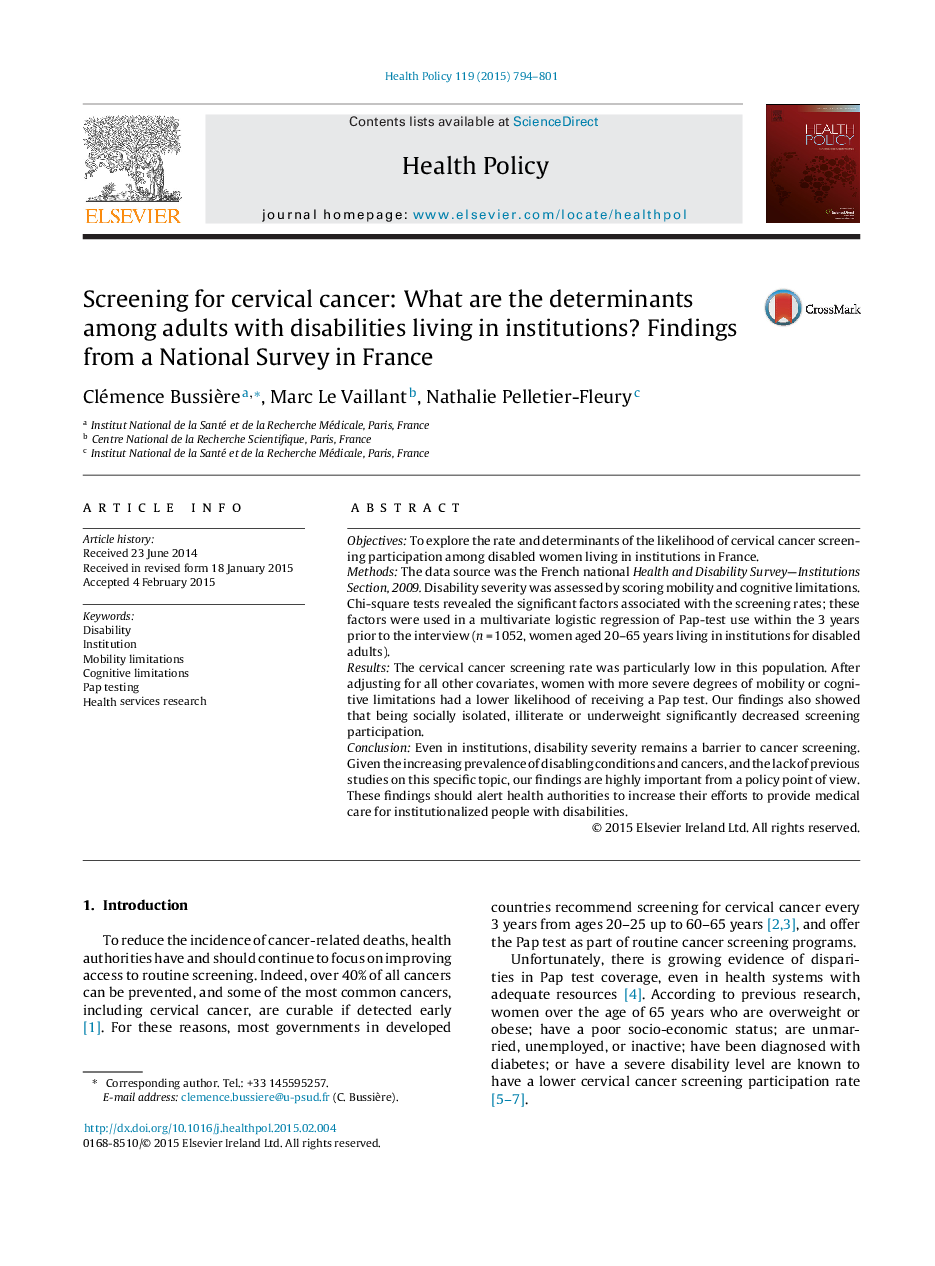| Article ID | Journal | Published Year | Pages | File Type |
|---|---|---|---|---|
| 6239269 | Health Policy | 2015 | 8 Pages |
â¢We examine the Pap test participation among disabled women living in institutions.â¢The rate of cervical cancer screening is particularly low in this population.â¢The severity of disability is a barrier to cervical cancer screening.â¢Being socially isolated, illiterate or underweight also decrease the screening rate.â¢Institutions do not play the protective role that we could expect.
ObjectivesTo explore the rate and determinants of the likelihood of cervical cancer screening participation among disabled women living in institutions in France.MethodsThe data source was the French national Health and Disability Survey-Institutions Section, 2009. Disability severity was assessed by scoring mobility and cognitive limitations. Chi-square tests revealed the significant factors associated with the screening rates; these factors were used in a multivariate logistic regression of Pap-test use within the 3 years prior to the interview (n = 1052, women aged 20-65 years living in institutions for disabled adults).ResultsThe cervical cancer screening rate was particularly low in this population. After adjusting for all other covariates, women with more severe degrees of mobility or cognitive limitations had a lower likelihood of receiving a Pap test. Our findings also showed that being socially isolated, illiterate or underweight significantly decreased screening participation.ConclusionEven in institutions, disability severity remains a barrier to cancer screening. Given the increasing prevalence of disabling conditions and cancers, and the lack of previous studies on this specific topic, our findings are highly important from a policy point of view. These findings should alert health authorities to increase their efforts to provide medical care for institutionalized people with disabilities.
